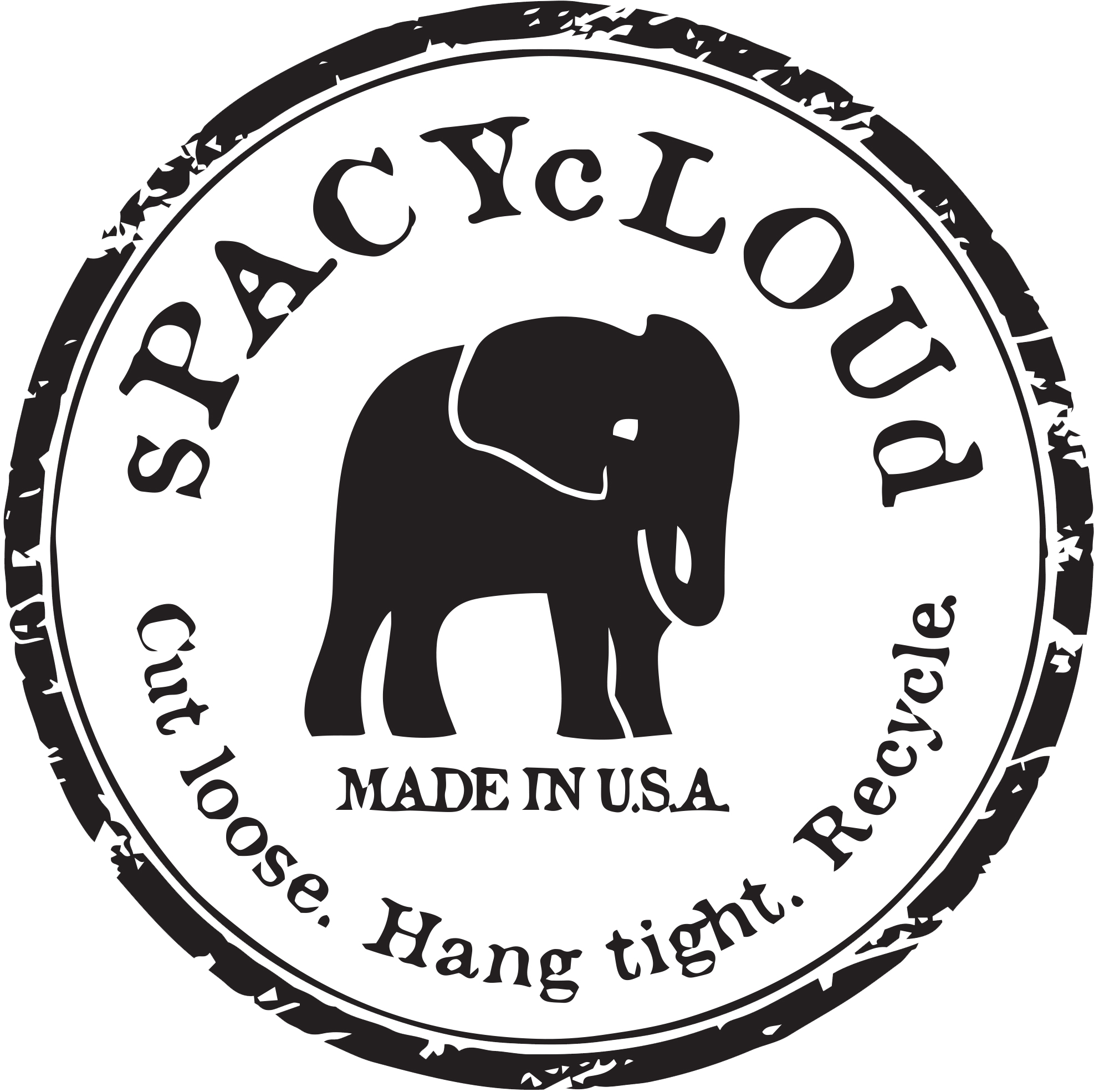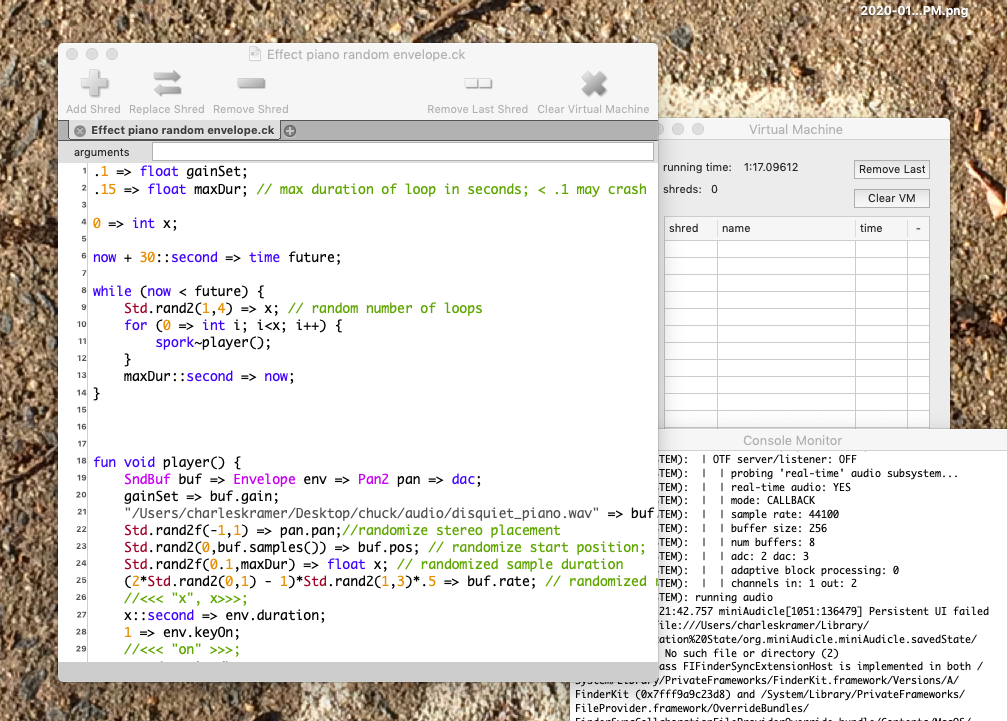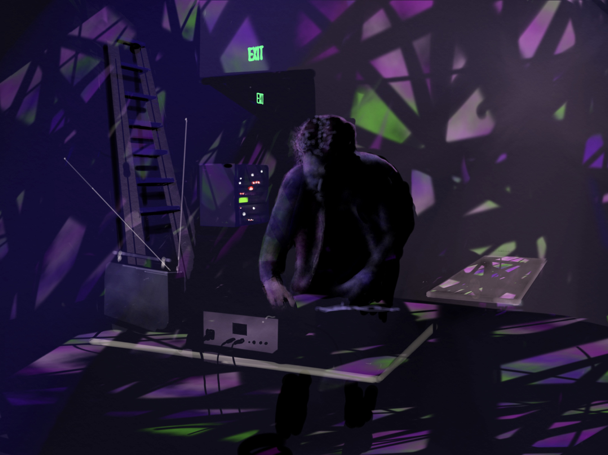How I Came to Live Coding - By NorthWoods
I do “live coding” under the name NorthWoods. Live coding is the practice of turning computer code into music by manipulating the code to get different sounds during the performance. That is, my live coding turns this:
Into this: NorthWoods LIve Stream
In terms of what you hear, live coding sort of turns the usual conception of computer music upside down. The notion of computer music usually evokes something cold, pre-programmed and robotic, but live coding is organic, evolving, even chaotic. As someone who’s been playing live music for over four decades, I find that live coding frees me from the constraints of standard music software--and from the constraints of physical musical instruments.
There are lots of different softwares and languages used for live coding. I use a programming language called ChucK. It gives me a lot of very granular control over sound. For example, I can take the sound of a recorded piano and mess with the smallest atomistic pieces--samples that are 1/44,100th of a second long. I can (say) randomly change every 13th sample or replace random pieces with samples from another piece of music. I can slow it down or speed it up until it sounds like an orchestra or an earthquake. I can create a new musical instrument where one synthesizer module modifies a second one one that modifies a third one, or where it randomizes the way it responds to my input.
In my live show, I launch pieces of software that I’ve written and manipulate them.
When I’m live coding I can radically change the flow of a live set on the fly. I can weave together found sound, glitchy beats, voices, normal-ish synth sounds to create shifting atmospheres. I can even re-sample the live sound around me and remix it and alter it on the fly.I experiment live too--I’ll make changes to code that can have unpredictable consequences (I’ve crashed my machine a few times!). Sometimes I combine live coding with other elements, like this show where I used a shortwave radio, a circuit-bent toy keyboard, and an antenna that picks up electromagnetic interference:
(photo by Brian Aitken)
By the way, the software I use is free and the stuff I’ve written is all available on my GitHub linked on my page below. If you’re interested I could do a clinic at sPACYcLOUD to show how ChucK works and run you through a few exercises on your laptop--hit me up or reach out to Tati at sPACYcLOUD.
Also keep an eye on the sPACYcLOUd Lounge schedule, I’ll be back there for live coding in February and for a live streaming event in March.
My page: www.northwoodselectro.com
ChucK resources: https://chuck.cs.princeton.edu
All about live coding: www.toplap.org


